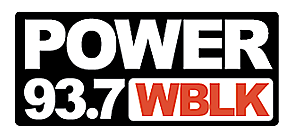
Money Minute: Tips to Save Money On Grocery Shopping
Tired of going broke when you go grocery shopping? Yasmin Young, host of the 2 to 6 Takeover (2-6PM, M-F), talks with Kawanza Humphrey, VP of KeyBank, about tips to save money grocery shopping.
Tips to Save Money On Grocery Shopping
Grocery Shopping on a Budget
• No matter what's on your list, grocery shopping on a budget is hard to do. But with a little planning ahead and creative thinking, you can stretch your food budget farther than you ever imagined. Here are ideas to get you started.• Let's start from the start: Going grocery shopping on a budget means creating a budget in the first place. To know how much you should spend on groceries, note your monthly income on a spreadsheet and subtract recurring expenses. Save receipts over time and note how much you're spending. Decide on a reasonable percentage for groceries and stick to it.
• Make Food Last Longer
o CNBC reports that the average American family throws away around $2,000 worth of food each year. Make your groceries last longer so you don't have to throw away spoiled food. Separate produce and meat in your fridge so they don't spread bacteria to each other. Poking holes in plastic bags will air out fruit and vegetables and make them last longer. And wrapping greens like lettuce in foil before refrigerating keeps them fresh longer, according to Self.• Bulk Up on Staples
o Stock up on large packages of nonperishables, and buy in quantity when you spot a sale. Rice, pasta, oats and lentils won't go bad on you, and neither will canned tuna and beans. You can use these staples in many cost-saving recipes. Some grocery stores also allow you to buy ahead on baked goods. If you're planning a large gathering, ask your store's bakery if you can purchase that big cake or platter when it's on sale. Then bring in your receipt as much as a month later to pick it up for your big event.• Befriend the Butcher
o There's no way around it - meat is one of the most expensive items in the store. To save, buy one large roast instead of shopping for various cuts of meat. Ask the butcher to remove the bone, which you can use for soup stock, then grind part of the meat for hamburgers and cut the rest for a pot roast. Or, consider pork - it's less expensive, especially if you buy a butt or shoulder, which you can easily shred to make pulled pork. While you're talking to the butcher, ask about getting a bag of chicken backs, necks and feet. Some butchers will just give it away and others may charge a small amount. Use these ingredients to make a rich stock for soups and stews.• Buy Your Own Cow
o Got a big freezer? Some local farms and ranches might be able to help you with something that will probably go beyond your local butcher's scope. They may sell you a whole grass-fed cow - or one-half or one-quarter of one cow for much less than you'd pay at a grocery store. If that's too much meat for you, consider splitting the cow with friends or relatives.Additional online resources from KeyBank:
(This material is presented for informational purposes only and should not be construed as individual tax or financial advice. Please consult with legal, tax and/or financial advisors. KeyBank does not provide legal advice. KeyCorp 2017. KeyBank member FDIC.)
Saving Money Cashing Checks without a Bank Account
KeyBank Plus Check Cashing
• KeyBank Plus Check Cashing is now available at 18 Buffalo area KeyBank branches.• KeyBank Plus Check Cashing allows individuals without accounts to cash their approved payroll, tax refund, or government checks for a low 1.5% fee at their nearest KeyBank Plus branch. By comparison, many check cashing stores charge between 3% to 7% per check cashed.
• This is part of our KeyBank Plus suite of banking solutions and free financial education designed to meet the needs of the unbanked and underserved populations.
• To use KeyBank Plus Check Cashing, customers need only bring an acceptable form of photo identification, such as a driver’s license, state I.D., passport or Matricula Consular , as well as the payroll, government or tax refund check they wish to cash, made payable to themselves. At their first visit, customers will also need to provide the bank with personal information, including name, street address, social security number, birth date and a valid phone number.
• Once a client record is established, the client can go straight to the teller line when visiting a KeyBank branch and complete their check cashing transactions. There is a minimum fee of $3 and a maximum fee of $25 per check cashed. Checks of up to $5,000 may be cashed and tax rebate checks are not subject to the maximum fee limit. Additionally, every fifth check is cashed free and participants are eligible to receive five fee-free money orders when they cash their check.
• KeyBank is working with community partners to raise awareness about this service and make sure those who would benefit from it know about it.
Additional online resources from KeyBank:
(This material is presented for informational purposes only and should not be construed as individual tax or financial advice. Please consult with legal, tax and/or financial advisors. KeyBank does not provide legal advice. KeyCorp 2017. KeyBank member FDIC.)
Tips for Making and Sticking to a Budget
Making and sticking to a budget in 2018
• Road trips and travel of all sorts benefit from planning and preparation. The same goes for your financial journey. Get set to make good progress in the coming year with these important steps.• Think about your goals. Both long term and short term. The big ones, like buying a house, and ones that are less big, but important to you. (A week in Hawaii or a cruise? A new computer, ASAP?) Making this your first step can change how you take the next ones, so don't be tempted to skip it.
• Using Hello Wallet, our Financial Wellness Tool monthly budget planner, make a plan to spend less than your monthly income. We've made it simple, and we'll walk you through a few items the first time you create a budget.
• Make it your New Year's resolution to regularly check your Financial Wellness Tool dashboard to track your spending trends and financial progress. Check your spending in individual categories to see if you're staying on budget, and see how your finances are doing overall.
• Remember, in many areas, you really can make changes in order to spend less. For example, maybe you pick up takeout food for dinner several nights a week, or buy your lunch at a deli near your office nearly every day. If you cook dinner at home and take leftovers to work for lunch, you can trim your meal costs by quite a bit. You'll save even more if you budget your grocery shopping.
• Another possibility: Are you paying for movies or shows you don't watch? If your cable package provides more content than you're using, a less expensive streaming service might be a good alternative for you, allowing you to cut your cable cord and reduce your entertainment expenses.
Additional online resources from KeyBank:
(This material is presented for informational purposes only and should not be construed as individual tax or financial advice. Please consult with legal, tax and/or financial advisors. KeyBank does not provide legal advice. KeyCorp 2017. KeyBank member FDIC.)
Should You Get Pet Insurance?
Should I Get Pet Insurance?
• Just as there’s health insurance to cover medical expenses for people, you can buy pet insurance to cover unexpected veterinary bills for your furry friends. But you may be wondering, “Should I get pet insurance? Is it worth it?” Learning about the potential costs of veterinary care and the benefits of insurance can help answer these questions.• Pet insurance can be a lifesaver if your pet ever needs hospitalization or surgery. Knowing that insurance will provide coverage can give you peace of mind as well as the assurance that you won’t need to choose between holding onto savings and providing care for your pet.
• Financial Benefits: A basic pet insurance plan usually costs between $30 and $50 a month, according to Money. Luckily, those monthly payments can save you from much larger bills in the event of an emergency.
• Peace of Mind
o Pet insurance also makes budgeting for veterinary expenses easier and more predictable. Without insurance, a procedure for your pet can throw off your entire budget and lead to agonizing decisions about cutting back other spending, drawing from your savings or borrowing money. Having insurance means that in the event of a pet’s surgery or hospitalization, your out-of-pocket costs will be limited. It’s often impossible to predict when a pet will become ill, and thanks to insurance, you can still create a workable budget that will be fairly stable even in the event of an emergency.• If you decide to get pet insurance, be sure to do plenty of research first. There are a lot of plans to choose from and they each have their pros and cons. But no matter how you look at it, once you weigh the potential costs of veterinary care against the premiums and benefits of insurance, the answer to the question “Should I get pet insurance?” is likely a resounding yes.
Additional online resources from KeyBank:
(This material is presented for informational purposes only and should not be construed as individual tax or financial advice. Please consult with legal, tax and/or financial advisors. KeyBank does not provide legal advice. KeyCorp 2017. KeyBank member FDIC.)
Tips for Protecting Your Electronic Gifts
How to Extend the Life of Electronics
• Many of you got electronic devices for the holiday They arelong-term investments — depending on the product, they can last from four to ten years or more. To get your money’s worth, it makes sense to protect your gadgets from avoidable damage and breakdowns. Follow these tips to extend the life of electronics and keep them in good working order.• Keep Gadgets Clean: Buildup from dust and dirt can damage electronics, so keep your devices clean. Use a can of compressed air to blow away dust. If keypads get sticky or screens become smudged, dampen a microfiber cleaning cloth in a solution of equal parts water and rubbing alcohol, then wipe off the dirty areas. Just make sure to turn off and unplug devices before cleaning them.
• Prolong Battery Life: A common misconception dictates that it’s better to let a device’s battery run down before charging it. In fact, the battery will last longer if you charge more frequently. As the Telegraph reports, lithium-ion batteries like the ones in smartphones and tablets retain their capacity longer if they’re depleted by only 50 percent and then charged, rather than being depleted by 100 percent before charging. So if you see your device’s battery at 50 percent after a day’s use, go ahead and charge it — don’t wait until the battery is fully drained.
o And make sure your device’s battery isn’t working too hard. Turn on battery saver mode in your device’s settings and lower your screen’s brightness level, if possible. Frequent app notifications can overwork your battery, too, so turn off any notifications that aren’t essential.
• Avoid Extreme Temperatures: To extend the life of your electronics, keep them out of extreme conditions that could harm them. Try to keep devices indoors at room temperature, and don’t place them in direct sunlight for long periods of time. Similarly, don’t leave a smartphone or laptop in a car on a hot day.
• Use a Case and Screen Protector: Protect handheld devices like smartphones, tablets and e-book readers with a case and screen protector. If you drop your device, a case will mitigate the force of the impact, and a screen protector helps prevent scratches and dents to the device’s screen. After several months’ wear, you can peel off the screen protector and put on a fresh one, which is much cheaper and easier than trying to replace the screen itself.
(This material is presented for informational purposes only and should not be construed as individual tax or financial advice. Please consult with legal, tax and/or financial advisors. KeyBank does not provide legal advice. KeyCorp 2017. KeyBank member FDIC.)
Tips for Charitable Giving
Charitable Giving Tips
• Many charitable organizations make special appeals at holiday time, and your family may already be thinking of giving to a worthy cause in addition to — or even in lieu of — exchanging presents with one another. Before you pull out your credit card or checkbook, though, consider a few tips on how to find the right charity for you — one that will help you make the impact you’re hoping to achieve. Here are some essential questions to ask about any nonprofit organization that you’re considering supporting.• Does Its Mission Align With Your Interests and Values?
o Deciding on the right charity to give to for the holidays starts with talking about the issues that matter most to you and your family. Your compassion may be aroused by the desperation of an overseas famine, or you may feel a push to address poverty and homelessness in your own town. You may want to support an organization whose focus mirrors your longtime personal interest in education, the arts or the environment.
• Is It Trustworthy?
o As important as knowing how to find a good fit is, knowing how to steer clear of the charities that are not as forthcoming with where their funds are going is even more crucial. You’ll want to pay special attention to how committed an organization is to accountability and transparency. Check out reviews through online charity evaluators like Charity Navigator, BBB Wise Giving Alliance, Charity Watch and GuideStar. Search for information about complaints or scams associated with the organization’s name. Use this IRS web page to make sure the organization is eligible to receive tax-deductible contributions.
• Is It Financially Stable?
o Giving wisely means choosing a charity that has a track record of handling its donations and financial operations responsibly. Look on the charity’s website for a link to its IRS Form 990, a document containing detailed financial data that most major tax-exempt organizations are required to file every year. Charity Navigator and GuideStar also provide access to many nonprofits’ 990 forms.
o Nonprofit organization websites often post copies of their audited financial statements. These reports reveal information about the organization’s accounting practices, business transactions and other financial activities.
• Can It Document Its Impact?
o A reputable and established nonprofit should be able to demonstrate progress toward its stated goals. Does its website or brochure cite concrete numbers of people assisted, or does it make vague statements about the “countless lives” it claims to have touched?
Additional online resources from KeyBank:
(This material is presented for informational purposes only and should not be construed as individual tax or financial advice. Please consult with legal, tax and/or financial advisors. KeyBank does not provide legal advice. KeyCorp 2017. KeyBank member FDIC.)
How to Save Money During Holiday Travel
Holiday Travel Tips for Saving Money
- The holidays may be the most wonderful time of the year, but they’re also one of the most expensive. On top of food, gifts and decorations, many of us have to travel to visit family and friends. All of those costs can quickly add up. But traveling during the holidays doesn’t have to empty your wallet. Use these holiday travel tips to save.
- Search Airfares Early: Airlines change prices all the time. Find a price that fits your budget by searching early and often. That way, as soon as you see a price you like, you can book it. Sites like Kayak and Airfarewatchdog allow you to set alerts for your routes, letting you know when prices change. Remember to also search your route on multiple websites as different sites often have different prices.
- You also might want to consider clearing the cookies on the browser you’re using. While it’s still unproven and largely considered a myth, there’s plenty of anecdotal evidence that suggests airlines might be tracking your activity online and displaying higher seat prices when they think you’re ready to buy. You can easily check if this could be happening to you by double-checking prices on a different browser or clearing your cookies before and after you search.
- Just don’t wait too long to book: According to Expedia flight data, travelers who book zero to six days before Thanksgiving pay more than 20 percent above the average ticket price. You can also try booking two one-way flights since sometimes one airline may have a low price for one direction and another airline may have the lowest price for the other. Compare flights with connections to nonstop flights, and don’t forget to look at nearby airports. For example, instead of flying to Boston, see if flights are cheaper to Providence.
- Travel on Unconventional Days: Find the cheapest rates on flights by using a flexible travel search. Many sites allow you to see the lowest prices to travel during a given month or show you the price difference between your desired dates and leaving a few days before or after. Sometimes airfares are cheaper if you travel on the actual holiday.
- The same goes for driving: Hitting the road on the day of a holiday may help you avoid the traffic and chaos that usually plagues the roads the day before. Traffic app Waze analyzed its data and found that for Thanksgiving, the busiest days to travel are the Wednesday before and the Sunday following the holiday.
- Look Beyond Hotels: Airbnb and other vacation rental sites can help you save on accommodations, especially when you compare the prices to hotels. You can often find lower nightly rates, as well as properties that have kitchens, allowing you to save even more by cooking instead of dining out.
- If you feel comfortable, you can swap or rent your house. Of course, depending where you live, finding a temporary tenant can take time. Sites like HomeExchange make it easy to meet other home swappers and provide an easy-to-use platform with a support team to help you with the process.
Additional online resources from KeyBank:
(This material is presented for informational purposes only and should not be construed as individual tax or financial advice. Please consult with legal, tax and/or financial advisors. KeyBank does not provide legal advice. KeyCorp 2017. KeyBank member FDIC.)
Protect Yourself From Fraud While Shopping Online
Online Shopping: Safety Practices
• With cybercrime on the rise, it’s more important now than ever before that consumers be vigilant about protecting their information online in order to preserve their financial wellness.
• If you plan to do some of your holiday shopping online this year, there are some best practices you should follow to ensure your personal information is kept safe in the process.
• Use secure and private internet connections
o You shouldn’t make purchases on an open Wi-Fi network because your information could be visible to others. Some criminals even set up fake Wi-Fi networks in order to access sensitive information, such as your credit card number.
o Use encrypted Wi-Fi networks and looks for URLs that have an “s” after the “http”, which indicated the website is secure.• Protect your devices
o Make sure all of your devices are equipped with up-to-date anti-virus software. That means not only your computers, but your tablets and smartphones as well.• Use strong passwords
o A strong password will include upper and lowercase letters, numbers and symbols arranged randomly. Many people use easy and common passwords for convenience – but that makes it much easier for others to hack into their accounts.
o If it’s an option, use two-factor authentication for added security.• Set up and pay attention to fraud alerts
o If your account offers an alert if suspicious activity is detected, be sure to take advantage of that.Additional online resources from KeyBank:
(This material is presented for informational purposes only and should not be construed as individual tax or financial advice. Please consult with legal, tax and/or financial advisors. KeyBank does not provide legal advice. KeyCorp 2017. KeyBank member FDIC.)
Investing in Certificates of Deposit
A Certificate of Deposit Gift: Money + Savings Lessons = One Great Idea
• If you’re in the market for a unique present that can teach important financial lessons, have you considered a certificate of deposit gift or U.S. savings bond?
• These gifts can also be launching pads for conversations about the importance of saving or having a rainy day fund. And, since both have penalties for withdrawing money early, there are lessons to be learned about waiting: Patience truly is a virtue with certificates of deposit, also known as CDs, and savings bonds.
• A CD is a type of savings account that generally guarantees a fixed rate of interest over a designated term that can be as short as a week or as long as several years. After a CD reaches its term, its owner can withdraw the funds, renew the CD or move the money to a different CD. Many have a penalty for withdrawing money before the maturity date.
• When researching CDs, consider the minimum deposit requirement, term and annual percentage yield (APY), which measures the actual interest earned per year and is helpful when comparing CDs of various interest rates and compounding frequencies. This CD calculator can help.
• Make sure you have all needed information on hand before you head to the bank. You’ll likely need some personal information about the intended recipient, including their Social Security number.
• Savings bonds, which are U.S. Treasury securities backed by the government, are quite different financial products. They’re designed specifically as longer-term investments but can be purchased for as little as $25.
• There are two kinds of savings bonds to choose from: Series EE bonds, which pay a fixed interest rate, and Series I Savings Bonds, which earn interest based on the combination of a fixed rate and an inflation rate. The Treasury sets rates each May and November.
• EE bonds issued through October 31, 2017, earn an annual interest rate of 0.1 percent. They’re guaranteed to at least double in value in 20 years and earn interest for up to 30 years. Be sure to check on current interest rates when you buy your savings bond.
• The composite rate for I bonds issued through October 31, 2017, is 1.96 percent, applicable for the first six months of bond ownership. The rate can change because a portion is tied to an inflation rate set every six months. These bonds also earn interest for up to 30 years.
• Savings bonds are primarily sold through the TreasuryDirect website in electronic form, although you can buy paper I bonds with your IRS tax refund.Additional online resources from KeyBank:
(This material is presented for informational purposes only and should not be construed as individual tax or financial advice. Please consult with legal, tax and/or financial advisors. KeyBank does not provide legal advice. KeyCorp 2017. KeyBank member FDIC.)
Using the Snowball Method to Pay off Debt
Debt Snowball Method: Slay Your Debt Swiftly and Simply
• If you’ve found yourself facing various debts, it’s easy — and completely normal — to feel overwhelmed. Where do you even begin on your journey toward debt-free living?
• The debt snowball method is here to help. Simple and speedy, this debt pay-down strategy can deliver a much-needed sense of accomplishment as you watch your debts disappear one by one. Now that’s something to smile about.
• What Is the Debt Snowball Method?
• Popularized by personal finance guru Dave Ramsey, the debt snowball method of repayment focuses on paying off small balances first. How Can I Use This Debt Pay-Down Method?
• Here’s a simple method of getting yourself moving on “snowballing” your debts:
o 1.Make a list of all your debts in order of balance, from lowest to highest.
o 2.Next to each debt, be sure to note the minimum monthly payment.
o 3.Calculate your cash available once you’ve met your monthly living expenses — rent/mortgage, utilities, insurance, food and so on.
• Now, with your cash available, be sure to stash a few dollars a month away into savings. A good rule of thumb is to hold off on using the debt snowball method until you have at least $1,000 in an emergency savings account. Once you have that, you can work towards the recommended 6 months in take-home pay in emergency savings while working on paying off your debt.
• Once you’re ready, use your extra cash to make the minimum monthly payments on all of your debts except your smallest balance. With the money left over, make an extra payment towards that smallest balance.Additional online resources from KeyBank:
(This material is presented for informational purposes only and should not be construed as individual tax or financial advice. Please consult with legal, tax and/or financial advisors. KeyBank does not provide legal advice. KeyCorp 2017. KeyBank member FDIC.)
More From 93.7 WBLK









